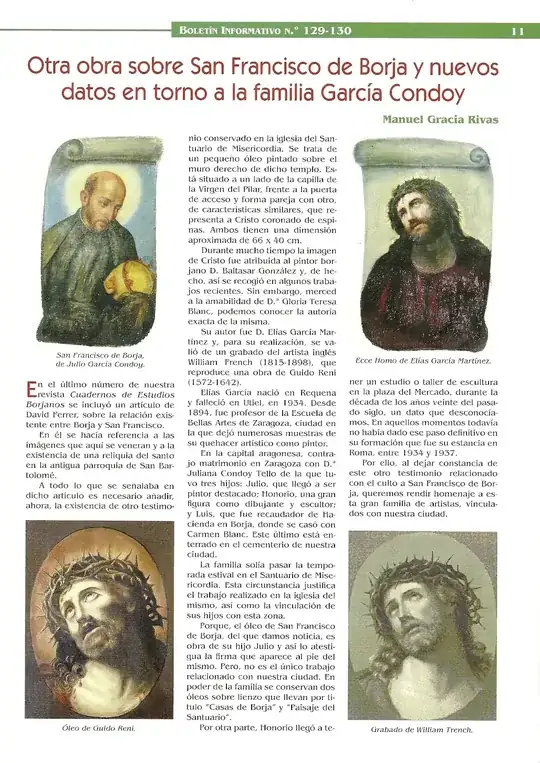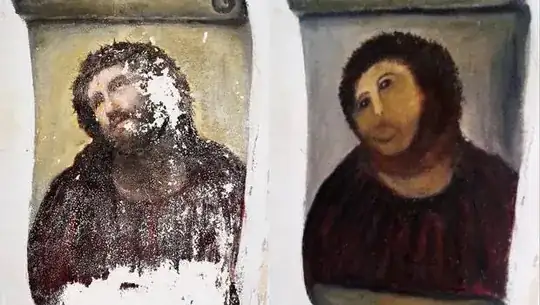Yes, it's real.
It has been extensively covered by Spanish national TV (TVE) and newspapers (mainstream, not tabloids).
The news originates from Centro de Estudios Borjanos (Study Center of Borja). It has been originally reported on their blog on 7th of August.
15 days later it has been picked up by regional newspaper Heraldo de Aragón. From there it made national news and went viral internationally.
The painting itself has been mentioned 2 years ago in one of Centro de Estudios Borjanos information bulletins (Boletín Informativo nº 129-130 of 2010)

Keep in mind, that it is not priceless art masterpiece, as some international news suggest. It's been painted by local painter in local church. Elías García Martínez didn't even have entry in Spanish wikipedia until yesterday. And only other mention of the author is in museum in Requena, town of 21.000 people.
Above bulletin doesn't mention exact date when it was painted, but gives some hints as author lived in region of Zaragoza in 1894-1934. The painting is a copy of engraving by William Trench, which itself is a copy of medieval painting by Guido Reni. The painting is a mural, but it is not fresco. It's painted with oil paint.

